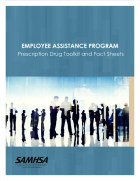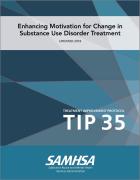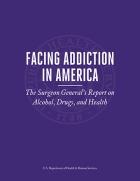This report provides an update on the present state of coverage, availability of, and access to, medications for treating ongoing alcohol use disorder (AUD) and opioid use disorder (OUD) and reversing an opioid overdose within state Medicaid plans. It also includes examples of innovative efforts to increase access to medications for the treatment of SUDs.
Dashboard: Filter Bricks
Main page content


This guide intends to educate clinicians and other stakeholders about the harms of using more than one substance and consideration for addressing concurrent substance use (CSU) and concurrent substance use disorders (CSUD).

The EAP Prescription Drug Toolkit and Fact Sheets provide guidance related to counseling, referrals, and follow-up services (e.g., alternatives to prescription drugs, workplace drug misuse and relapse prevention, dangers of combined drug use, screenings, and evaluations before returning to work).

This updated TIP includes the latest evidence on motivation-enhancing approaches and strategies. It describes how substance use disorder treatment providers can use these approaches and strategies to increase participation and retention in substance use disorder treatment.

Esta hoja informativa se puede usar como una guía para las personas que buscan tratamiento de salud mental. Ofrece tres pasos necesarios para llevar a cabo antes de utilizar un centro de tratamiento, así como las cinco señales de un centro de tratamiento de calidad, que incluye revisar la acreditación, la medicación, las prácticas basadas en la evidencia, el papel de las familias y las redes de apoyo.

This fact sheet serves as a guide for individuals seeking behavioral health treatment. It provides three necessary steps to complete prior to utilizing a treatment center and the five signs of a quality treatment center, which include a review of the accreditation, medication, evidence-based practices, position on the role of families, and support networks.

This report presents 2016 national estimates of use of alcohol, tobacco products, illicit drugs (such as, marijuana, cocaine, heroin, hallucinogens, and inhalants, as well as the misuse of opioids, prescription pain relievers, tranquilizers, stimulants, and sedatives), substance use disorders, and substance use treatment among people 12 years of age and older. It Includes national estimates of any mental illness, serious mental illness, major depressive episode, use of mental health services and suicidal ideation among adults ages 18 or older and national estimates of major depressive episode, use of mental health services among adolescents aged 12 to 17. Trend information on these topics are also presented.

This advisory discusses the interaction between obsessive-compulsive disorder (OCD) and substance use disorder. It provides clinicians with an overview of screening and evidence-based treatments for OCD.

This executive summary of the Surgeon General's Report on Alcohol, Drugs, and Health addresses alcohol, illicit drugs, and prescription drug misuse in the United States. Chapters of the report cover neurobiology, prevention, treatment, recovery, health systems integration, and recommendations for the future.

This Surgeon General's Report on Alcohol, Drugs, and Health addresses the prevalence of alcohol, illicit drugs, and prescription drug misuse in the United States. Chapters of the report cover neurobiology, prevention, treatment, recovery, health systems integration, and recommendations for the future.
Displaying 1 - 10 out of 13

